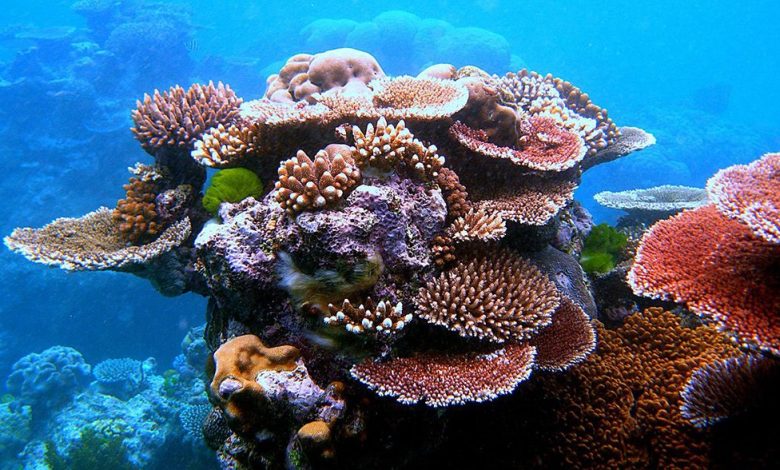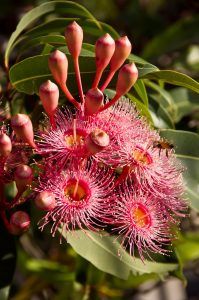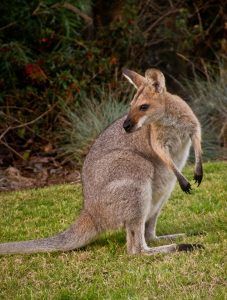Australia Climate: [Characteristics, Flora, Fauna and Adaptability]

Important points about the Climate of Australia:
- What is? The climate of Australia is the conglomerate of climatic manifestations that occur in this country due to the various factors that affect it.
- Where it is located? The climate of Australia is found on this country occupying coordinates of 25º south latitude and 133º east longitude.
- What flora predominates? Eucalyptus, acacias, some ferns, mosses, kauris pines, fungi, roots, among other species.
- What fauna predominates? The fauna of Australia is diverse, but its greatest representations are found with the well-known koalas and kangaroos.
- How long is the day and night? The average duration of a day is 10 hours, while nights can occupy up to 14 hours.
- Can humans live in this climate? The life of human beings in Australia is perfectly possible, although it does have some uninhabited areas due to the high temperatures that prevail.
 Australia is one of the countries in the world with the greatest variability of climates around its geography.
Australia is one of the countries in the world with the greatest variability of climates around its geography.
It has a higher percentage of arid zones, represented by dunes, but the tropical and temperate climates also coexist.
Studying the behavior of the factors that modify it is key to understanding the presence of forests and certain species of fauna.
And that is precisely what we will be talking about today because if there is a very interesting country to study the climate issue, it is, without a doubt, Australia. Will you join us?
What is the climate of Australia?
 The climate of Australia is the conglomerate of climatic manifestations that occur in this country due to the various factors that affect it.
The climate of Australia is the conglomerate of climatic manifestations that occur in this country due to the various factors that affect it.
One of the best known is the El Niño phenomenon, which is responsible for such marked variations in rainfall.
In general, Australia’s climate is semi-arid because it has a large area covered by dunes, which occupy approximately 40% of the country. The rest of the surrounding climate is milder, being temperate to the east and west and a more tropical climate to the north.
Where is Australia’s climate located geographically?
 The climate of Australia is found on this country occupying coordinates of 25º south latitude and 133º east longitude.
The climate of Australia is found on this country occupying coordinates of 25º south latitude and 133º east longitude.
This location denotes the southern hemisphere of the planet, specifically on the continent of Oceania.
Australia is an island whose coasts are bathed by the Pacific Ocean, the Indian Ocean and a small section by the Antarctic Glacial Ocean. All these factors are very important for the climatic changes that occur throughout the year.
What characteristics does the climate of Australia have?
The characteristics that define the climate of Australia are:
- Soils: they are very varied, found above all dunes, but there is also a small amount of grasslands, deserts and fertile soils.
- Precipitation: varies depending on the atmospheric manifestations of the environment. Sometimes there are constant rainfalls and, at other times, prolonged periods of drought. The most common phenomenon is El Niño. The constant rainfall is in very short periods of time, since Australia is the place with the least annual rainfall in the world after Antarctica.
- Temperatures: they are variable, reaching a maximum of 50º C in the hottest areas and falling a few degrees below the 0 limit in others. However, the latter is not very common.
- Temperate zone: in an area that is southeast and southwest of Australia. Its average temperature is 20º C, generating winters with mild temperatures and hot summers.
- Arid region: it is distributed in the central part of the country, mostly, being the largest extension of land with 44% made up of deserts. The temperature variability between summer and winter is evident, reaching in the first case up to 40º C and decreasing in the second to 18º C.
What flora predominates in the climate of Australia?
 Australia’s flora is not as varied as in other parts of the world. However, that does not exempt you from having a good representation.
Australia’s flora is not as varied as in other parts of the world. However, that does not exempt you from having a good representation.
Eucalyptus, so well known and valued throughout the world, is very well spread in the Australian territory, being found in various types.
In addition to the above, eucalyptus has formed dense stands of forests with versions of giant plants.
These formations have become a focus worldwide, which is why the Blue Mountains (one of the most characteristic) were declared a World Heritage Site by UNESCO in 2000.
Reference should also be made to acacias, some ferns, mosses, kauris pines, fungi, roots, etc. The main areas with the presence of flora in Australia are distributed in tropical forests, open forests, savannahs, maquis, acacia forests and deserts.
What fauna predominates in the climate of Australia?
 The fauna of Australia is diverse, but its greatest representations are found with the well-known koalas and kangaroos.
The fauna of Australia is diverse, but its greatest representations are found with the well-known koalas and kangaroos.
However, there are also other species that are highly relevant to its ecological balance, such as the emu, which is also respected and valuable. It is even part of the National Shield.
Others that we can count are the Tasmanian devil, the platypus, cockatoos, the dingo, the cassowaries, the possum, among others.
How long is the day and night in Australia’s climate?
 The length of day and night in Australia is influenced by its location on the world map.
The length of day and night in Australia is influenced by its location on the world map.
This acts in function of seeing days with shorter durations than nights in most of the year.The average length of a day is 10 hours.
While the nights can occupy up to 14 hours. These figures are variable depending on the movement of the earth, but it is an estimate that is very close to reality.
Can humans live in Australia’s climate?
 The life of human beings in Australia is perfectly possible, although it does have some depopulated areas due to the high temperatures that prevail.
The life of human beings in Australia is perfectly possible, although it does have some depopulated areas due to the high temperatures that prevail.
One of the most famous cities in the world is Sydney, which, without being its capital, is visited by tourists every year.
The conditions of the south, to the east and west, allow to work the land and keep farm animals, with which they take advantage of food production.
And, while it is true that Australia may eventually be subject to certain natural disasters such as fires due to high temperatures, the human being has managed to adapt.
Australia is an island located in the Pacific Ocean. This location generates a significant impact on the climatic conditions of the place. It has a wide thermal range that is accentuated, above all, in the differences between what happens in the summer and what happens in the winter.
However, one of its biggest problems is the rains and other phenomena, such as cyclones, which have come to affect certain areas of the country. Even so, it has a lot to offer and that is why it has become an ideal place to spend a different vacation for many people.
Bibliographic references
- Differences in climate that produce forest fires and heat waves in Victoria, Australia, D Pazmiño – FIGEMPA: Research and Development, 2020 – revistadigital.uce.edu.ec
- Arid Mediterranean climate conditions, F Squella, R Meneses, T Gutiérrez – oes.chileanjar.cl
- Approach to the study of ocean currents and their influence on the climate, the phenomenon of the current of the child, J Amestoy Alonso – 1999 – repository.ual.es
- EFFECTS OF GRAZING IN ARID MEDITERRANEAN CLIMATE ON PHYSICAL SOIL PROPERTIES, L FERNÁNDEZ-POZO, T BUYOLO, J CABEZAS – EDAPHOLOGY, 2006 – edafologia.ugr.es
Maybe you are also interested in:
- Koppen climate classification: [Concept, Characteristics and Types of Climates]
- Alpine Climate: [Characteristics, Flora, Fauna and Adaptability]
- Arid Climate: [Characteristics, Flora, Fauna and Adaptability]
- Temperate Continental Climate: [Characteristics, Flora, Fauna and Adaptability]
- Continental Climate: [Characteristics, Flora, Fauna and Adaptability]
- High Mountain Climate: [Characteristics, Flora, Fauna and Adaptability]
- Climate of Argentina: [Characteristics, Flora, Fauna and Adaptability]
- California Climate: [Characteristics, Flora, Fauna and Adaptability]
- Climate of Europe: [Characteristics, Flora, Fauna and Adaptability]
- Tundra Climate: [Characteristics, Flora, Fauna and Adaptability]
- Equatorial Climate: [Characteristics, Flora, Fauna and Adaptability]
- Cold Climate: [Characteristics, Flora, Fauna and Adaptability]
- Cold Weather: [Characteristics, Flora, Fauna and Adaptability]
- Mediterranean Climate: [Characteristics, Flora, Fauna and Adaptability]
- Ocean Climate: [Characteristics, Flora, Fauna and Adaptability]
- Polar Climate: [Characteristics, Flora, Fauna and Adaptability]
- Subpolar Climate: [Characteristics, Flora, Fauna and Adaptability]
- Subtropical Climate: [Characteristics, Flora, Fauna and Adaptability]
- Subhumid Temperate Climate: [Characteristics, Flora, Fauna and Adaptability]
- Temperate Climate: [Characteristics, Flora, Fauna and Adaptability]
- Humid Tropical Climate: [Characteristics, Flora, Fauna and Adaptability]
- Dry Tropical Climate: [Characteristics, Flora, Fauna and Adaptability]

![Photo of Prune a Carob Tree: [Importance, Time, Considerations and Steps]](https://www.complete-gardening.com/wp-content/uploads/2022/08/prune-a-carob-tree-importance-time-considerations-and-steps-390x220.jpg)
![Photo of Fertilize Fruit Trees: [Best Time, Macronutrients, Micronutrients and Steps]](https://www.complete-gardening.com/wp-content/uploads/2022/08/fertilize-fruit-trees-best-time-macronutrients-micronutrients-and-steps-390x220.jpg)
![Photo of Plant Cauliflower: [12 Steps] + Complete Guide](https://www.complete-gardening.com/wp-content/uploads/2022/08/plant-cauliflower-12-steps-complete-guide-390x220.jpg)
